Genoa, Ducal Palace. A jewel in the heart of the city
Located in the heart of Genoa we find Palazzo Ducale. The palace, with its long history, can be considered one of the symbols of the city, whose political institutions it has hosted for centuries. Today, home to the Foundation of the same name (Palazzo Ducale Fondazione per la Cultura), it hosts art exhibitions in its spaces, as well as cycles of meetings, reviews, conferences and educational activities aimed also at children, also hosting the headquarters of the Historical Archives of the City.
The palace came into being when the captains of the people Oberto Spinola and Corrado Doria, realizing the need to give an official seat to the city government, which used to meet in the residences of the various members, purchased around 1290 the palace owned by the Doria family, which overlooked today’s Via Tommaso Reggio, and Palazzo Fieschi, owned by the heirs of Alberto Fieschi, a nobleman exiled in 1272 for rebelling against the Republic. From the amalgamation between the various buildings arose the ’’Palazzo degli Abati’’ (so called because it was the seat of the ’’abbot of the people,’’ at the time the highest representative of the people), going to form the first nucleus around which the building would later develop. The epithet ’’ducal’’ was assumed by the palace from 1339, when it became the seat of the first Genoese doge, Simon Boccanegra.
The search for more space led, between the 14th and 15th centuries, to an initial enlargement of the medieval core, but it was in the 16th century that significant transformations took place; in fact, with the consolidation of the Republic it was decided to give this important institution a seat that reflected its importance and prestige. This ambitious goal was achieved by the Como architect Andrea Cerisola known as il Vannone, to whom the work was entrusted in 1590. The new Mannerist-style palace had a majestic and solemn appearance, and thanks to the enlargement of the "curtain,’’ a body of the building intended to house the garrisons that closed off the square to the south, it became possible to better defend the complex, which took on the appearance of a palace-fortress. In 1777 a great fire affected a large part of the Ducal Palace, and the reconstruction of the damaged parts was taken care of, after winning a competition, by one of the most successful neoclassicist architects in northern Italy, Simone Cantoni.
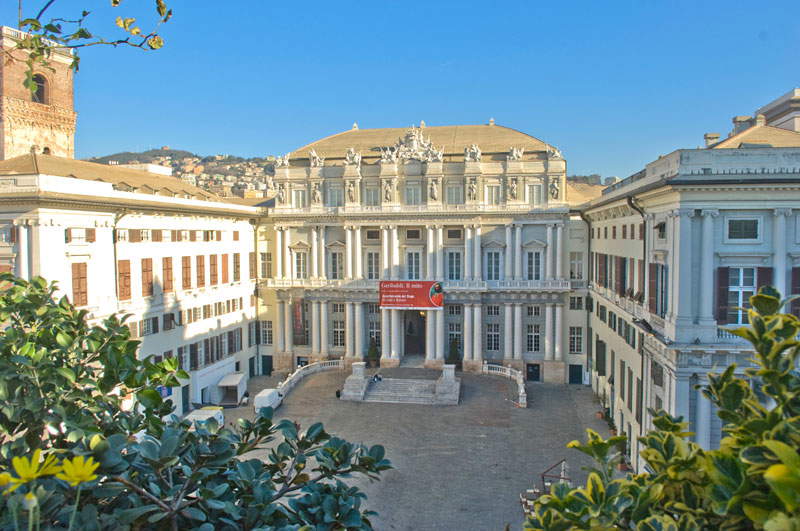

Over the course of the 20th century, the palace underwent numerous renovations; in the 1930s, under the direction of painter Orlando Grosso, at the time Director of the Office of Fine Arts of the City of Genoa, a recovery of the medieval traces of the palace was carried out, which led, however, to the loss of some seventeenth-century interventions, and the complete renovation of the facade on Piazza De Ferrari. Instead, it was the architect Giovanni Spalla, who was entrusted with the lengthy restoration that began in the 1980s, who carried out a major recovery of the sixteenth-century architecture of the Vannone, harmonizing structures belonging to different centuries and enhancing them.
The main entrance to the Ducal Palace is on the facade facing Matteotti Square, built by Cantoni between 1778 and 1783. In neoclassical style, made of light-colored marble and polished stucco, it is marked on three levels, the first two of which house pairs of columns in Doric and Ionic styles, respectively, while in the third we find in the niches placed between pilasters, which house statues surmounted by sculptural groups made by Nicolò Traverso and Francesco Ravaschio, two Genoese sculptors.
The façade on De Ferrari Square, on the other hand, was designed by Grosso, and is divided into two registers, both characterized by pictorial decoration consisting of columns and other painted architectural elements, and large windows surmounted by small windows.
Entering through the main entrance, one encounters the grand vaulted atrium created by Vannone, flanked by two porticoed courtyards. It is possible, thanks to the "Hanging Road,’’ a steel ramp in helical form designed by Giovanni Spalla, to move around the various levels of the palace, from the lower ones up to the tower. The two floors below the atrium respectively house the Sala della Cisterna Maggiore, which takes its name from its past use as a cistern to collect rainwater from the courtyard above, and the Sala del Munizioniere, which served as a warehouse, now used as an exhibition space for temporary exhibitions and festivals.
From the atrium one reaches the piano nobile by climbing the monumental staircase, the work of Vannone, which houses on the gallery at the top of the first flight the statues of Andrea Doria and Giovanni Andrea Doria made by Fra’ Giovannangelo Montorsoli and Taddeo Carlone. Originally made for the entrance staircase on Matteotti Square, they were moved inside for conservation reasons. The grand staircase divides into two opposing flights, and having reached the top of the right-hand ramp, it is possible to admire the Coat of Arms of the Republic of Genoa, commissioned from the Sarzano painter Domenico Fiasella, also the author of the fresco depicting the Virgin and Saints John the Baptist, George and Bernard interceding with the Trinity for the city of Genoa (c. 1625-1630), visible from the top of the left-hand ramp. Ascending the west ramp leads to theDoge’s Apartment, consisting of a complex of rooms set in succession and the adjacent Doge’s Chapel. The fourth room, known as the “Doge’s Room,” is the most richly decorated, with lustrous stucco in white standing out against the backgrounds done in pale yellow and green. In the overlays of the room were four canvases, now in Palazzo Tursi, depicting the four cardinal virtues, Fortitude (ca. 1630), by Andrea Ansaldo, Justice (ca. 1620) and Temperance by Giovanni Andrea de Ferrari, and Prudence (ca. 1630) by Domenico Fiasella. The canvases, originally made for the Hall of the Great Council, served as a warning, a memorandum of the fundamental qualities that a good republic had to embrace.


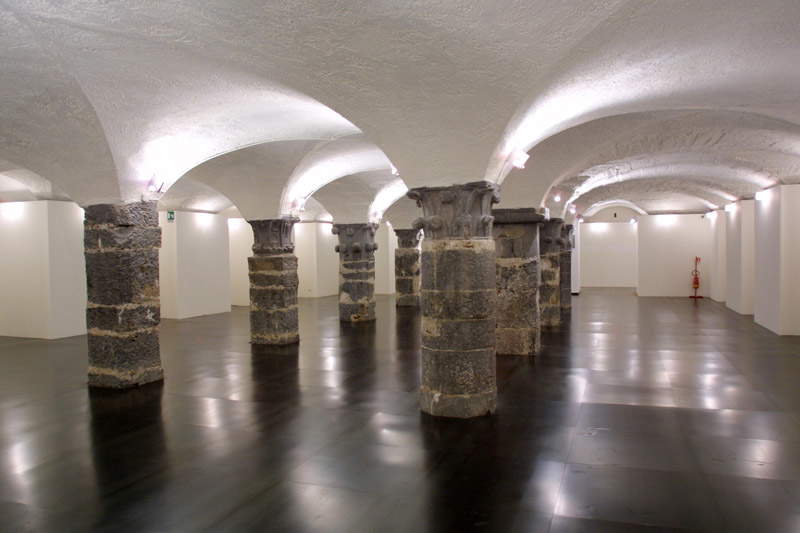


Also part of the apartment is the baroque Doge’s Chapel, the jewel of the palace, frescoed by Giovanni Battista Carlone between 1653 and 1655. The entire decorative cycle reflects the need to legitimize the transformation of Genoa into a monarchy, the crown of which had been assigned to the Virgin Mary; for this reason the artist chooses to represent in his frescoes not only saints, but also city heroes, choosing episodes that emphasize Genoa’s important role in the defense of the Christian faith in the world. Indeed, one can see The Taking of Jerusalem by Guglielmo Embriaco, which took place in the First Crusade, while on the opposite side is The Arrival in Genoa of the ashes of the Baptist, delivered by Embriaco to the bishop of Genoa. On the back wall, within a reported painting, we find Christopher Columbus planting the cross in the New World; the illustrious Genoese is depicted as difensor fidei as he takes on the role of evangelizer of the New World. On the vault is depicted Mary Queen of Genoa: the Virgin, invoked by Saints George, John the Baptist, Lawrence and Bernard, protectors of the city, as she is crowned as the protector of Genoa while showing the baby Jesus, who holds a scroll with the words "Et rege eos, " aimed precisely at indicating the mandate of government entrusted to Mary. The Virgin is also the protagonist of the statue made by Francesco Maria Schiaffino in 1729, placed in the center of the altar made by Giulio De Ferrari, replacing Giovan Battista Paggi ’s altarpiece depicting the Madonna and Child between Saints George and John the Baptist, which was lost.
On either side of the altar is the Massacre of the Giustiniani of Chios at the hands of the Ottoman Turks (1566) and on the left, the Creation of the Tridentine Order of Clerics Regular Minor by the Genoese father Giovanni Agostino Adorno (1588), flanked by bronze sculptures depicting the first evangelizers of Liguria, above which are represented founding episodes for the Genoese church. At the heart of the palace is the Salone del Maggior Consiglio, which hosted not only meetings of the Council of the Republic and the Doge, but also balls and parties. The hall, which can be seen today after Cantoni’s 18th-century restoration, is covered by a barrel vault and is richly ornamented with stucco, marble, and gilding. On either side of the entrance are plaster statues made by Andrea Casaregi representing the allegory ofConcord and Peace, while the statues of Justice andFortitude that flanked the now-destroyed throne of the Doge are the work of Nicolò Traverso and Francesco Ravaschio. The original fresco in the vault, by Giandomenico Tiepolo and depicting La Liguria e le glorie della famiglia Giustiniani (1783-1785), was lost and was replaced in 1875 with the one that can be seen today, by Giuseppe Isola, with the Allegory of the Commerce of the Ligurians. The decorative apparatus is made up of other works, such as Giovanni David’s The Battle of Meloria , which is above the main entrance to the room, while on the opposite wall one can admire Il Doge Leonardo Montaldo restituisce la libertà al Re di Cipro, Jacopo da Lusignano, by Emanuele Tagliafichi.
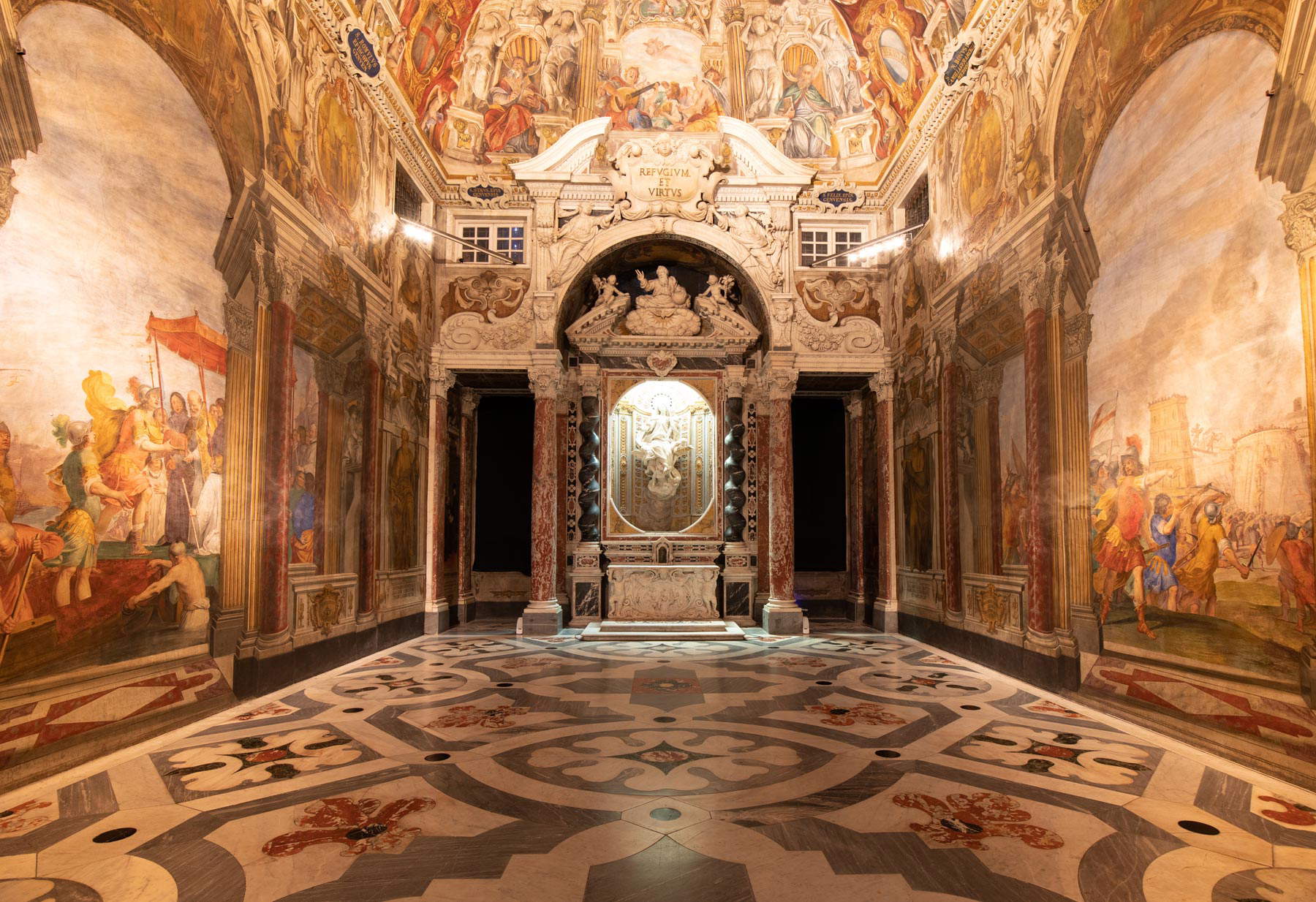
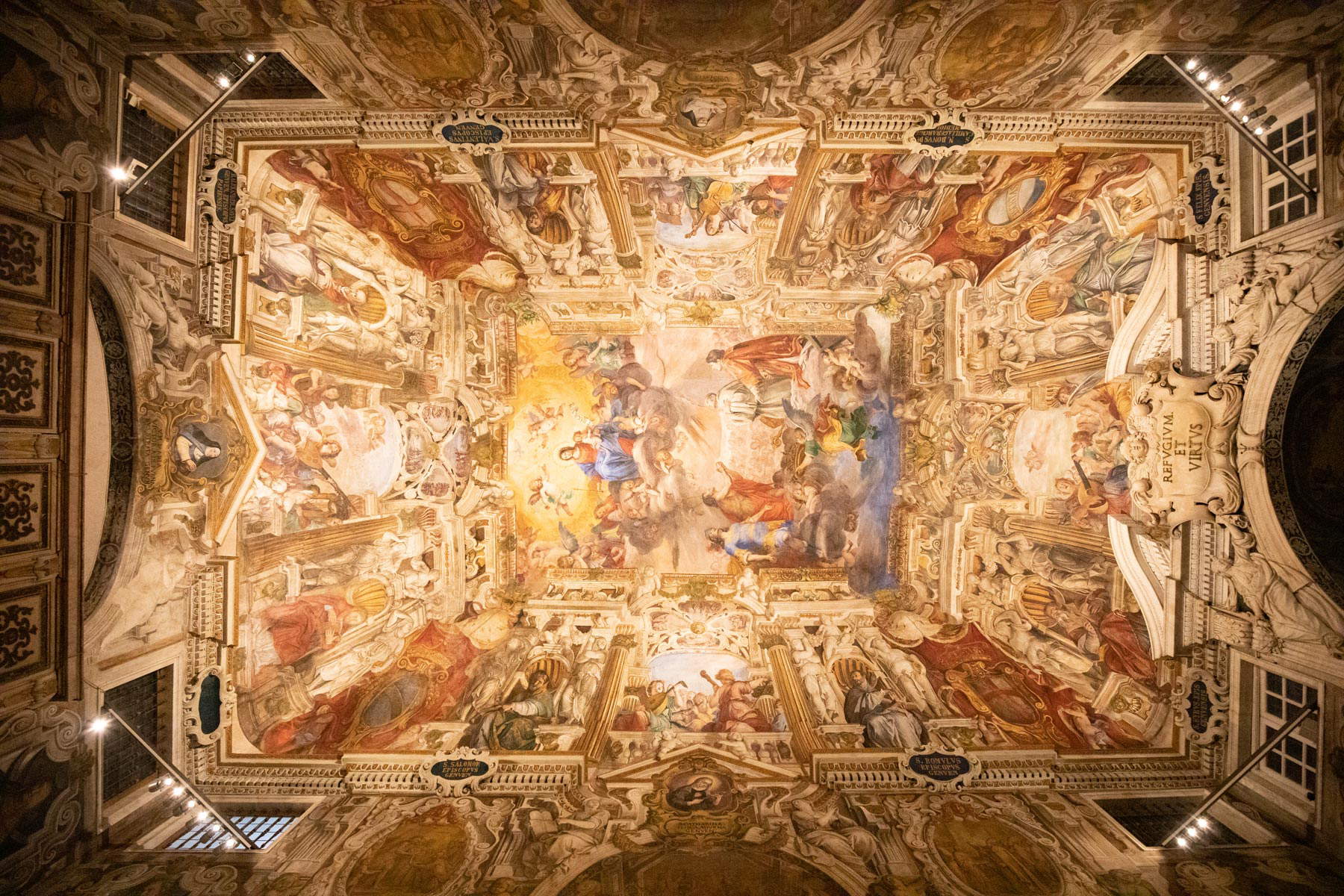
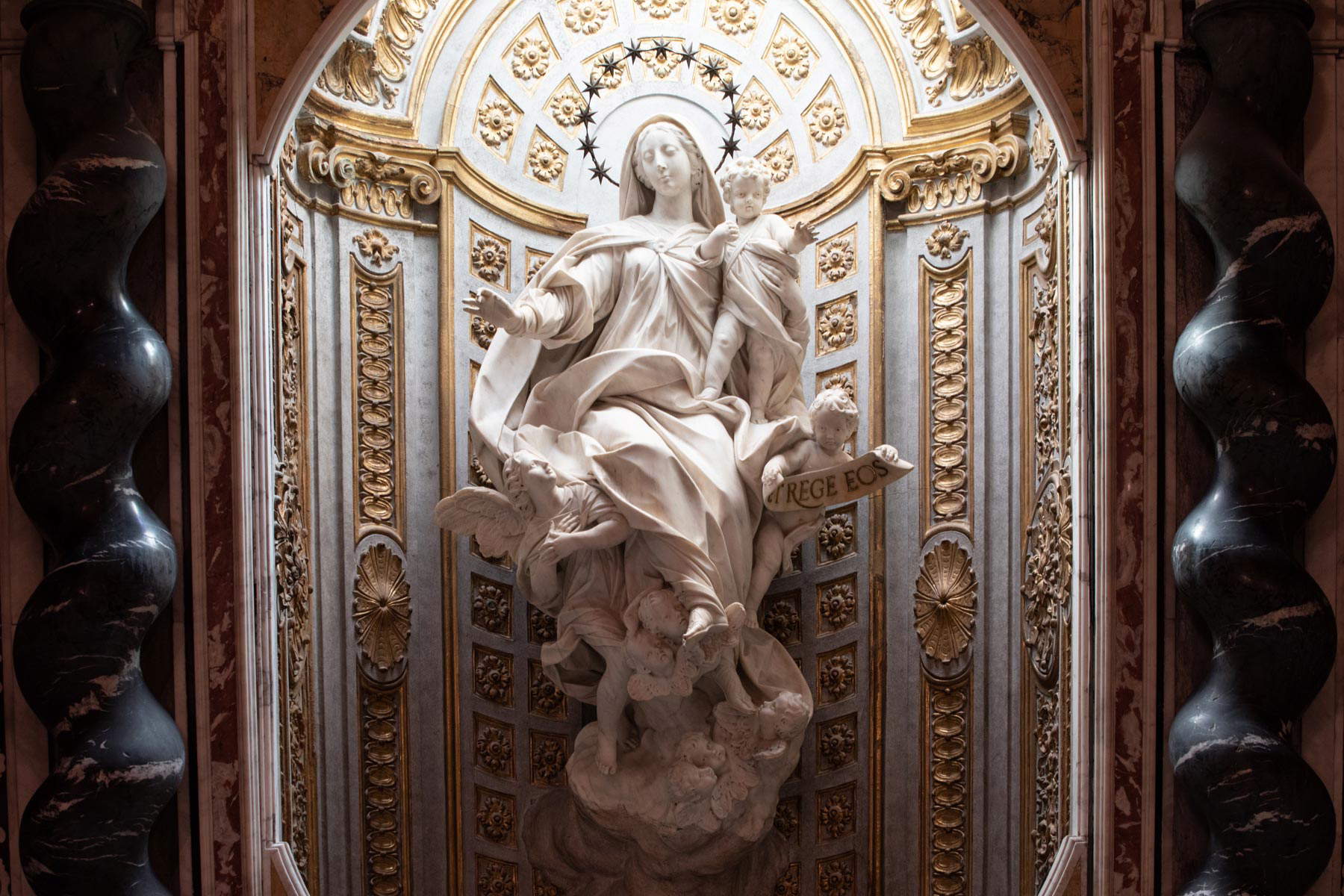
The name of the adjacent room, the Hall of the Minor Council, derives from its function: in fact, it housed the meetings of the Minor Council of the Republic with the Doge, who resided in the space delimited by the marble balustrade made by Carlo Barabino. After the damage suffered in the fire of 1777, the elaboration of the room’s decorative program was entrusted by Cantoni to Carlo Giuseppe Ratti, who also addressed in the room themes already proposed in the other rooms of the palace. Above the entrance and on the opposite wall are depictions of The Landing of Columbus in the Indies and The Arrival in Genoa of the Ashes of the Baptist . Among the canvases with Allegories of the Virtues of Good Government, we find stucco statues of distinguished men of the Republic, madeby Nicolò Traverso, Andrea Casaregi and Francesco Maria Ravaschio. Finally, raising our eyes to the ceiling, it is possible to admire The Apotheosis of the Republic with the allegory of Divine Wisdom, a work by Ratti, but made by looking at a sketch by Domenico Piola. Leaving the piano nobile and ascending thanks to the Strada Appesa, it is possible to visit the palace’s prisons. The medieval Torre Grimaldina, built according to some between 1298 and 1307 while according to others already present in the ancient Palazzo Fieschi, in fact served until the 1930s as a prison, where illustrious “guests” such as the musician Niccolò Paganini (arrested for seducing and kidnapping a minor) and the patriot Jacopo Ruffini (accused of plotting against the Kingdom of Sardinia: He died by suicide in prison), as well as the painter Domenico Fiasella (for injuring a person during an argument). The appearance with which the tower currently stands is after the restoration of Grosso, who sought to restore the tower to its medieval appearance. Still one of the symbols of the city, the tower has seven floors and houses at the top the belfry, built in 1539, from where the bell tolls rang on a variety of occasions, whether in dramatic moments, such as to warn the population in case of alarm, to summon the magistracies, or even at celebrations, as well as to solemnly greet important personalities who visited the doge.
The palace has hosted major events over the years, from the first exhibition in 1992, Two Worlds Compared, on the occasion of the 500th anniversary of the discovery of America, to the G8 meetings in 2001. The halls of the Doge’s Palace have been the site of major exhibitions, from the one on Anton van Dyck in 1997, to the anthological exhibition Steve McCurry. Journey Around the Man in 2012, to the more recent The Shape of Wonder, on the Genoese Baroque, and the highly acclaimed exhibition on Monet Monet Masterpieces from the Musée Marmottan Monet in Paris. Information on schedules and ticket prices for current exhibitions can be found here. Given its location in the center of the city, Palazzo Ducale is easy to reach by any means of transportation; in fact, it is about 15 minutes from both Genova Principe and Genova Brignole stations, while both by bus and subway you can get off at the stop in Piazza De Ferrari. For those arriving by car, it is possible to check the real-time situation of parking lots adjacent to Palazzo Ducale through the MobilityPoint of the City of Genoa, “Centro” area.
 |
| Genoa, Ducal Palace. A jewel in the heart of the city |
Warning: the translation into English of the original Italian article was created using automatic tools. We undertake to review all articles, but we do not guarantee the total absence of inaccuracies in the translation due to the program. You can find the original by clicking on the ITA button. If you find any mistake,please contact us.




























